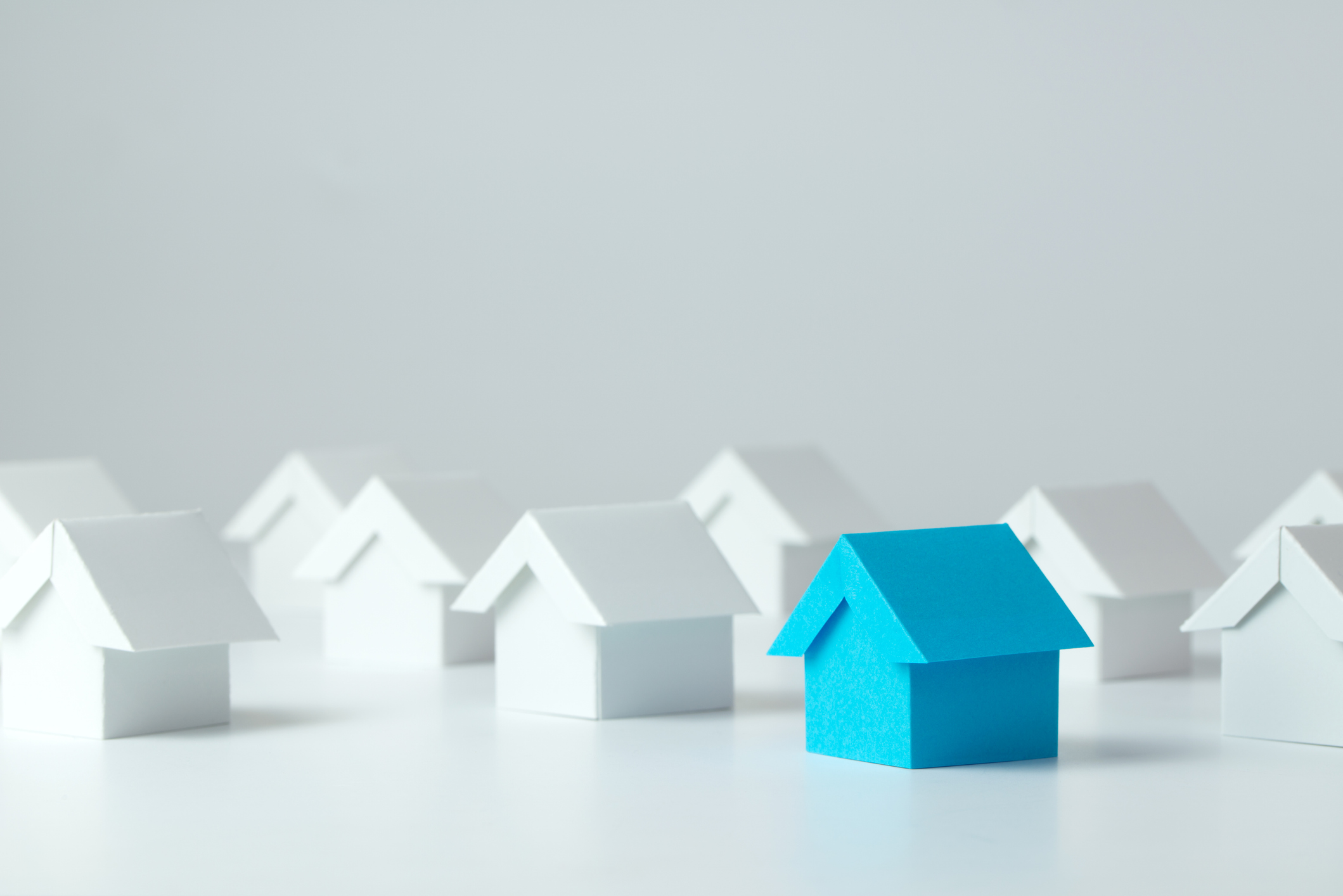Market for Home Solar Systems Heats Up
With falling costs and hefty tax credits for solar systems, more homeowners are harnessing the sun to save money.

Ivica Bilich and Jennifer Twiggs, of Charlotte, N.C., love their solar panels. “When I pull up to my house on a sunny day and see the panels, they look like a slot machine dropping money on my front porch,” says Bilich.
The couple had been thinking about going solar for years, but in the fall of 2018, the numbers—a combination of falling costs and incentives—finally made sense for them. They attended a presentation at a nearby brewery by local solar installer Jeff Redwine, co-owner of Renewable Energy Design Group, and left the event ready to pull the trigger. Bilich and Twiggs asked Redwine for a proposal. After visiting their home and reviewing a year’s worth of the couple’s electric bills, Redwine proposed a system that cost $20,000 before any incentives. The couple learned they would get a federal tax credit of $6,000—30% of the cost of the system—and a $4,320 rebate from Duke Energy if they acted quickly (funding is limited annually). The incentives reduced their total cost to $9,680.
“It was a no-brainer for us,” says Twiggs. With estimated savings of nearly $1,000 in the first year at today’s electric rates, they’ll save an average of $1,500 annually over 25 years as rates rise. They figure they’ll recoup their cost in nine years and should save a bit more than $38,000 over 25 years.

Sign up for Kiplinger’s Free E-Newsletters
Profit and prosper with the best of expert advice on investing, taxes, retirement, personal finance and more - straight to your e-mail.
Profit and prosper with the best of expert advice - straight to your e-mail.
The case for going solar
Homeowners have been installing solar panels at a record pace, taking advantage of falling prices and the tax credit, which is slated to be phased out by 2022. Like computer chips, solar panels are getting more powerful, more efficient and cheaper every year, says Vikram Aggarwal, CEO of EnergySage.com, a consumer resource with loads of helpful information. In the past, panels were warrantied for 15 or 20 years, but today 25 years is typical. Now available in all black, panels and frames are more aesthetically pleasing, too.
After the tariff imposed on imported solar cells by the Trump administration in 2018, the cost bumped up, but it has since resumed its decline. The current tariffs apply to all imported panels. Newly threatened tariffs on Chinese imports likely won’t impact the price of residential solar panels in the U.S. because most of them are made in other countries, such as Korea and Malaysia.
In quotes from EnergySage’s participating installers in 2019, the price per watt ranges from $2.67 to $3.43, and the cost of solar panels in a 6-kilowatt system (the average size nationally) runs from $11,214 to $14,406 after the solar tax credit. The average household will recoup the cost of their system in just over seven years.
The higher the electric rate you pay, the sunnier your location and the greater the financial incentives, the more compelling the case for going solar. To get an estimate of the cost and benefit of adding solar panels to your home, use the EnergySage Solar Calculator. It uses a combination of satellite imagery (to see your roof, its size and orientation to the sun), data you provide about your electricity bill, real-time cost data from participating solar firms in your area and proprietary formulas to perform the analysis.
If you register (you must provide your address), you’ll receive competing quotes from solar contractors in your area who are part of EnergySage’s network of more than 500 prescreened companies that have demonstrated long experience in solar installation or have been certified by the North American Board of Certified Energy Practitioners. They must also have the proper licenses and insurance required to install solar. Installers pay a small fee to participate in the network.
The platform allows you to compare multiple offers to find the best deal. It pays to shop. In a 2017 study, the National Renewable Energy Laboratory found that large solar companies (such as SolarCity and SunRun) charged a 10% premium, on average. In Charlotte, Jeff Redwine says he has seen greatly inflated proposals from other installers. “I talked with a guy last week who had a $125,000 proposal for a system I would do for $30,000,” he says. When installers of all sizes compete on EnergySage, their quotes are even lower.
Shopping for solar can be daunting. “Solar remains a black box for most consumers,” says Aggarwal. To help consumers make more-informed decisions, EnergySage recently launched the EnergySage Buyer’s Guide. Based in part on data and analysis from the National Renewable Energy Laboratory, the guide allows consumers to easily search, filter and compare solar equipment (panels, inverters and solar batteries) based on quality rating, aesthetics, performance and pricing.
Installers are usually busiest in the last quarter of the year and expect to be more so this year. Ask them for their drop-dead date to sign a contract in order to meet the December 31 deadline and qualify for the 30% tax credit.
Anticipating the stepdown of the federal credit, states have begun to embrace renewable energy more aggressively, says Abigail Ross Hopper, CEO of the Solar Energy Industries Association. For example, beginning in 2020, California will require all new homes to be built with solar systems as well as energy-efficient features. Maryland and South Carolina recently mandated that more of the states’ electricity come from renewable sources. State governments are stepping in to protect net metering; in most states, homeowners whose systems produce more electricity than they use can send the excess to the utility’s electric grid and receive credit on their electric bill. (To see what incentives your state offers, visit dsireusa.org.)
Despite the desire of many for battery storage, especially in remote locations or in areas where power outages are frequent or prolonged, it has mostly proved to be too expensive for all but well-heeled early adopters. With batteries, you can store energy and tap it when the grid is down. Without batteries, you’ll still need a generator for power outages.
But manufacturers will soon open new factories, supply will increase and prices will fall. Battery storage already makes financial sense in California, where the cost of electricity can double during hours of peak demand. Homeowners can make more power than they need during the day, store it and tap it during the evening.
Ways to pay
A decade ago, a residential system cost $40,000 to $60,000, says Aggarwal, and solar financing wasn’t available. To avoid a huge cash outlay, homeowners had two options: They could lease their system and pay a solar firm a fixed monthly amount for the use of the system and a guaranteed amount of electricity. Or they could enter a power purchase agreement (PPA) and pay the solar company for the actual amount of electricity their system produced each month.
Today, with the cost of a typical system running $18,300 before the tax credit and incentives, two-thirds of homeowners have purchased their systems. Third-party ownership will reduce your electric bills, but buying your system will maximize the financial benefit. With third-party ownership, the solar firm benefits directly from the tax credit, not you—although it may pass along a lower cost to you.
Aggarwal uses this rule of thumb: If you sign a lease or PPA, you’ll see 15% to 30% lower utility bills. But if you pay for a system with cash, you’ll enjoy 100% of the savings—after you recoup the cost of the system. (For more about financing options, see “A Homeowner’s Guide to Solar Financing: Leases, Loans and PPAs” at cesa.org under “Resource Library.”)
If you want to finance your system, tapping a home-equity line of credit is a good way to do it. In mid June, the national average interest rate on a HELOC was 7.3%, according to Bankrate.com. The debt is deductible because it’s secured by your home and the panels are a substantial home improvement (interest on mortgage debt of up to $750,000 is deductible on your federal return if you itemize).
Over the past few years, solar loans have become widely available and cheaper. You’re most likely to get one through your installer, but lenders include banks, credit unions, specialty financing companies, manufacturers, public-private partnerships and utilities (search for lenders by state at energysage.com).
Mosaic, the largest solar lender in the U.S., recently offered fixed interest rates of 3% to 9% (on a $13,000 loan with a 10-year term), and LightStream, a division of SunTrust Bank, offered rates of 5% to 13.3% (on loans of all amounts). Solar firms typically affiliate with lenders so they can offer their customers financing. They may buy down the lender’s rate so they can provide a competitive rate, and they must pay lenders a dealer fee to offer a zero-down-payment loan. If you sign up for a solar loan through an installer, make sure you understand the terms and conditions of both agreements—the installer’s and the lender’s.
How to claim the tax credit
If you want to capture the full 30% tax credit, don’t delay. Your system must be “placed in service” by December 31, 2019, according to the tax code. At a minimum, that means your system should be installed and ready for inspection, says Randy M. Lucas, a CPA and renewable-energy tax consultant. In 2020, the credit steps down to 26%; in 2021, it falls to 22%. After that, it disappears.
You can claim the credit for solar panels you install on your primary residence or take a partial credit equal to the portion of the year that you live in your second home. You don’t have to itemize deductions. However, if you claim other tax credits, such as for the purchase of a plug-in hybrid or electric vehicle, or adoption expenses, your solar credit will be reduced by the sum of the other credits.
The larger your project, the larger your credit—but don’t do business with an installer who will help you (wink, wink) by adding costs that aren’t directly related to generating electricity, says Lucas. The credit applies to the cost of the solar panels, racking, inverters (they convert DC power produced by panels to AC power used by the house), wiring, performance monitors and installation. It also applies to the cost of light maintenance to prepare for installation, such as replacing a few shingles, or the cost of tree removal to reduce or eliminate shade on your roof. Lucas says the IRS appears to be receptive to applying the credit to battery storage. If you want to add on to an existing system, you can take the tax credit again.
You claim the federal solar tax credit on Form 5695. If your federal tax liability is less than the tax credit for which you’re eligible, you can carry over the difference to the next year. (The carry-forward of the tax credit should be available at least until 2022, but the IRS could disallow it after that, says TurboTax.)

Get Kiplinger Today newsletter — free
Profit and prosper with the best of Kiplinger's advice on investing, taxes, retirement, personal finance and much more. Delivered daily. Enter your email in the box and click Sign Me Up.

-
 The AI Doctor Coming to Read Your Test Results
The AI Doctor Coming to Read Your Test ResultsThe Kiplinger Letter There’s big opportunity for AI tools that analyze CAT scans, MRIs and other medical images. But there are also big challenges that human clinicians and tech companies will have to overcome.
By John Miley Published
-
 The Best Places for LGBTQ People to Retire Abroad
The Best Places for LGBTQ People to Retire AbroadLGBTQ people can safely retire abroad, but they must know a country’s laws and level of support — going beyond the usual retirement considerations.
By Drew Limsky Published
-
 Biden Proposes New Homebuyer Tax Credits
Biden Proposes New Homebuyer Tax CreditsTax Credits President Biden is calling for new middle-class tax breaks including a mortgage tax credit.
By Kelley R. Taylor Last updated
-
 How to Find Foreclosed Homes: Best Foreclosure Listings Sites
How to Find Foreclosed Homes: Best Foreclosure Listings SitesMaking Your Money Last Find foreclosed homes for sale on these foreclosure listing websites. Search for properties on these free, paid or government sites.
By Bob Niedt Last updated
-
 Luxury Home Prices Rise as the Rich Dodge High Mortgage Rates
Luxury Home Prices Rise as the Rich Dodge High Mortgage RatesLuxury home prices rose 9% to the highest third-quarter level on record, Redfin reports, growing nearly three times faster than non-luxury prices.
By Kathryn Pomroy Published
-
 Four Tips for Renting Out Your Home on Airbnb
Four Tips for Renting Out Your Home on Airbnbreal estate Here's what you should know before listing your home on Airbnb.
By Miriam Cross Published
-
 Five Ways to Shop for a Low Mortgage Rate
Five Ways to Shop for a Low Mortgage RateBecoming a Homeowner Mortgage rates are high this year, but you can still find an affordable loan with these tips.
By Daniel Bortz Last updated
-
 States With the Lowest Property Tax
States With the Lowest Property TaxProperty Taxes Homeowners in these states received some of the lowest property tax bills in the U.S. How does yours compare?
By Gabriella Cruz-Martínez Last updated
-
 Property Tax 101: What Homeowners Need to Know
Property Tax 101: What Homeowners Need to KnowProperty Tax No one likes to pay property tax, but knowing how these taxes work might make the situation more bearable.
By Katelyn Washington Last updated
-
 Save More with Tax Credits for Energy-Efficient Home Improvements While You Still Can
Save More with Tax Credits for Energy-Efficient Home Improvements While You Still CanTax Breaks Energy-efficient tax credits for home improvements were extended and expanded under the Inflation Reduction Act. But that could change under the Trump administration.
By Rocky Mengle Last updated